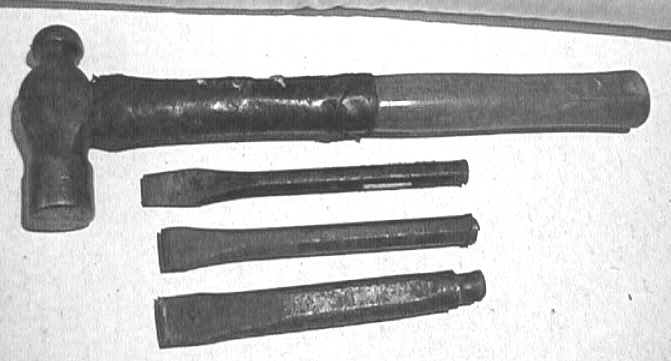I asked Delano to make a me a custom pickup in the P2 shape, as a twin coil in-line humcanceller. I requested this because I previously bought their "MC5 HE" double twin coil in-line humcanceller pickup, and really enjoyed the tone produced by the "north" half of the pickup at a specific location. The custom pickup arrived today. This is what my magnetic paper shows on the "north" surface (i.e. the side facing the neck) of this new custom Delano "SMC5 HE" pickup. (Please forgive the inclusion of my lumpen fingers.)

I've never seen that circular pattern in the magnetic paper before, and I've tested quite a number of bass humbuckers. I also tried my "screwdriver" test, where I lightly drag a small steel screwdriver across the surface. At this spot, the screwdriver wanted to "jump" over and continue on past the circle. It's the oddest thing I've ever seen!
I tried to use the magnetic paper to test my existing "MC 5 HE" pickup, but couldn't find this kind of spot on it. (I'll try again when I get a chance to remove it from its bass.) The same holds true for my other Delano "SBC driver" pickups (dual-coil and quad-coil humbuckers in P2 shell).
The magnetic paper shows the top surface as normal - there appears to be a single magnetic region which spans most of the top of the shell, but shifted slightly "north". (Carvin's H50AS "stacked coil" humbucker appears the same way. I think the armature is simply intended to be offset from the centerline of the shell.)
As a point of note, when I ordered this pickup, I was asked by Delano if I wanted to be able to use this pickup with any other pickups. I answered "no" since it was intended for a single-pickup bass. Now I am wondering whether this had anything to do with this magnetic anomaly, and what would have happened if I answered "yes" instead. I've read earlier posts which seem to indicate a difference in magnets and windings between their "humcanceller" and "humbucker" pickups, but I didn't know if this particular anomaly was part of that difference.
And by the way, the pickup sounds just fine. I was just puzzled by what I saw, so I thought I'd ask the forum. Any ideas?

I've never seen that circular pattern in the magnetic paper before, and I've tested quite a number of bass humbuckers. I also tried my "screwdriver" test, where I lightly drag a small steel screwdriver across the surface. At this spot, the screwdriver wanted to "jump" over and continue on past the circle. It's the oddest thing I've ever seen!
I tried to use the magnetic paper to test my existing "MC 5 HE" pickup, but couldn't find this kind of spot on it. (I'll try again when I get a chance to remove it from its bass.) The same holds true for my other Delano "SBC driver" pickups (dual-coil and quad-coil humbuckers in P2 shell).
The magnetic paper shows the top surface as normal - there appears to be a single magnetic region which spans most of the top of the shell, but shifted slightly "north". (Carvin's H50AS "stacked coil" humbucker appears the same way. I think the armature is simply intended to be offset from the centerline of the shell.)
As a point of note, when I ordered this pickup, I was asked by Delano if I wanted to be able to use this pickup with any other pickups. I answered "no" since it was intended for a single-pickup bass. Now I am wondering whether this had anything to do with this magnetic anomaly, and what would have happened if I answered "yes" instead. I've read earlier posts which seem to indicate a difference in magnets and windings between their "humcanceller" and "humbucker" pickups, but I didn't know if this particular anomaly was part of that difference.
And by the way, the pickup sounds just fine. I was just puzzled by what I saw, so I thought I'd ask the forum. Any ideas?



Comment